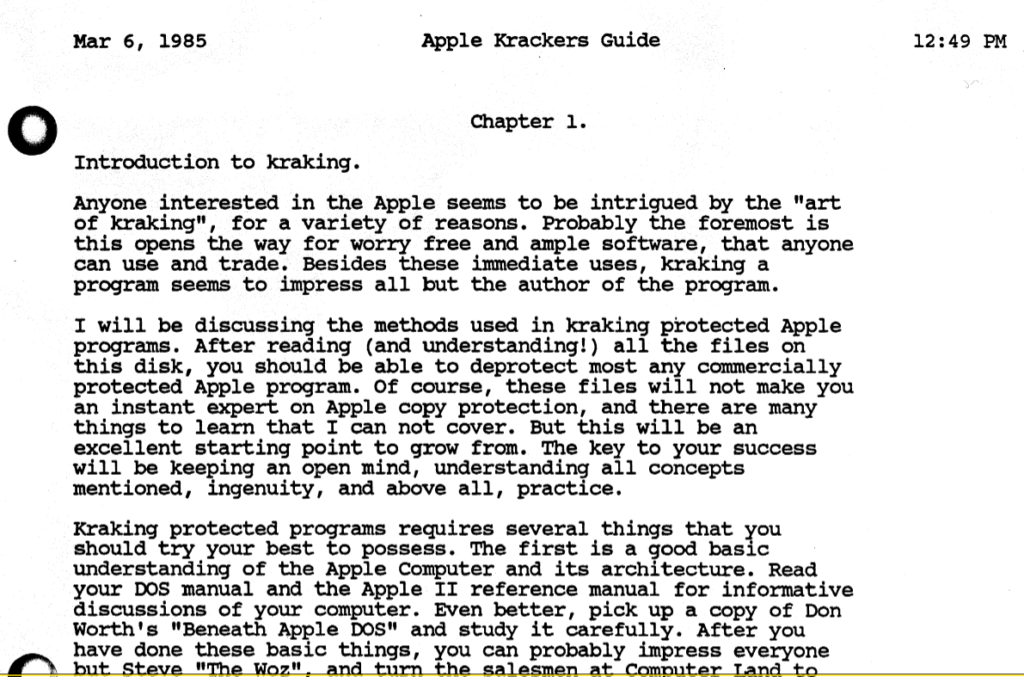Back in the days of the Apple II, there was a thriving scene in trading copies of commercial software. Means to prevent this, through copy protection schemes, were just as rampant, as publishers sought to protect their work from those who would use it without paying. The process of figuring out a disk’s copy protection and making it so it could be copied and run by others was called cracking, or sometimes, kracking.

Cracking was, and still is, a black art. There are many ways to protect a disk from being copied, and just as many to deprotect that data. Some disks remain uncracked to this day. It is the work of Apple II cracker 4am (Mastodon) to try to unlock the data on these rapidly aging pieces of media so they can be preserved. (On 4am, jump to the bottom.)
The Apple II Kracker’s Guide seems to have been written by a anonymous user known as The Disk Jockey. It’s a good overview of basic forms of copy protection and ways to defeat them. A copy is at the Internet Archive, but I encountered it in the collection at bitsavers.org, here. It’s like candy to someone of the right frame of mind. Like me!
Aside: If the name 4am sounds familiar, and you find yourself thinking “Didn’t he used to be on Twitter?” He was. He’s not anymore. This happened several months before the Age of Musk. Twitter’s automated processes decided somehow that a video he tweeted of Apple II software Super Print booting was revenge porn and banned him, even rejecting an appeal. He moved to Mastodon. Now that Twitter is missing half of its employees, situations like this will probably become more common. 4am is not the subject of this post, but if you want to read more about Apple II protection and its breaking, you should follow him on Mastodon. He has about one tenth of the followers there that he had on Twitter, which is a shame.
